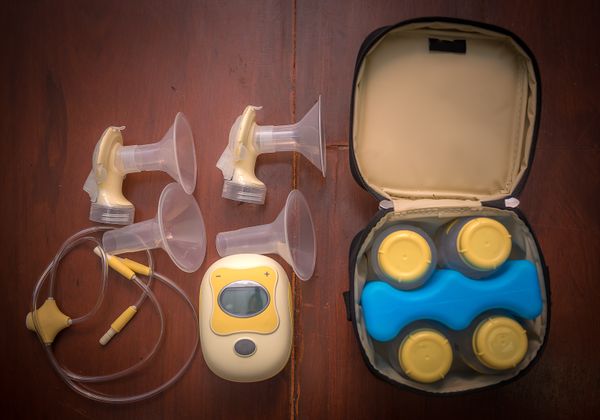There is now more support and information out there for new moms who want to breastfeed—as there should be. But what happens when it's time to wean or end your breastfeeding journey?
As much as breastfeeding isn't an automatic process, weaning also isn't automatic for most moms. In rare cases, a baby will stop nursing all on her own, but more often, it's a process.
I remember feeling quite overwhelmed with having to wean both of my children. I dreaded it because I didn't know how to go about stopping something that had taken up so much effort and time—up to eight hours per day at the very beginning, according to one of those baby tracking apps.
Also, it had become a time of bonding and comfort for my children. Nursing provided way more than just physical nourishment, even if it wasn't always a pleasant or pain-free process. And so, I dreaded weaning even more because I worried about how my two bottle-refusing, breast-attached kids would—or rather wouldn't—take it.
My worry soon turned into peace as I saw how well my kids adapted to gentle weaning.
Here are 5 tips that helped me get through the process: (Note: These are tips based on my experience of solely nursing from the breast.)
- Say "no" to guilt; weaning is a two-way street: I nursed my daughter for 16 months and my son for 18 months. Even though we had successfully met my goal of nursing for 12 months, I still felt guilty about wanting to wean them. (If it were up to them, they would have kept going strong into their preschool years!) I considered just continuing, but I didn't want to become resentful of them during our nursing sessions. I was ready to end this part of our relationship. And that's what I had to remember—it was just a part of our entire relationship, not the totality of it.
- Wait until everyone is healthy: Babies and toddlers like to nurse more often when they're sick. Don't begin saying 'no' to them when they're sick or going through a transition like a developmental milestone or teething. Wait until everyone is healthy and happy to begin.
- Drop one feed at a time: When I decided I was ready to wean, each kid was still nursing about three to four times per day. I knew stopping cold turkey would be too abrupt for them, and painful for me! I wanted my supply to decrease slowly so that I would not have engorged breasts. With my second, I got painful mastitis twice, so I knew I wanted to go slowly. The first feed I chose to drop was always the one they seemed to need the least. My daughter loved drinking a cup of milk in the mornings so for her, I dropped the morning session first. On the other hand, my son was the most attached to morning sessions so I chose to drop the mid-day one first. At that time, he nursed out of habit and only for a couple minutes since he had a full stomach from lunch.
- Realize that the gentle process can take months: Since I wanted to approach weaning gently, I dropped a feed and waited at least a couple weeks before dropping the next. Doing it this way meant that from the day I decided to wean until baby was fully weaned took several months.
- Be ready for lots of kisses and snuggles and hugs: Since nursing can be just as much about emotional bonding for babies, be ready to offer lots of physical touch and bonding time to your baby. For both kids, instead of nursing, I rocked them in the rocking chair and assured them that I wasn't going anywhere and still loved them. Yes, they would ask for the breast, but I would gently tell them that we wouldn't nurse anymore, but we could hug and snuggle whenever they wanted. During these times, I put my phone away (as hard as that is for me!). I gave lots of hugs and held them if they asked throughout the day during this transition.
I dreaded and anticipated weaning at the same time. As much as I might have loved to finish the process within a day, approaching it slowly and gently helped it go smoothly—without pain, tears or emotional distress.







